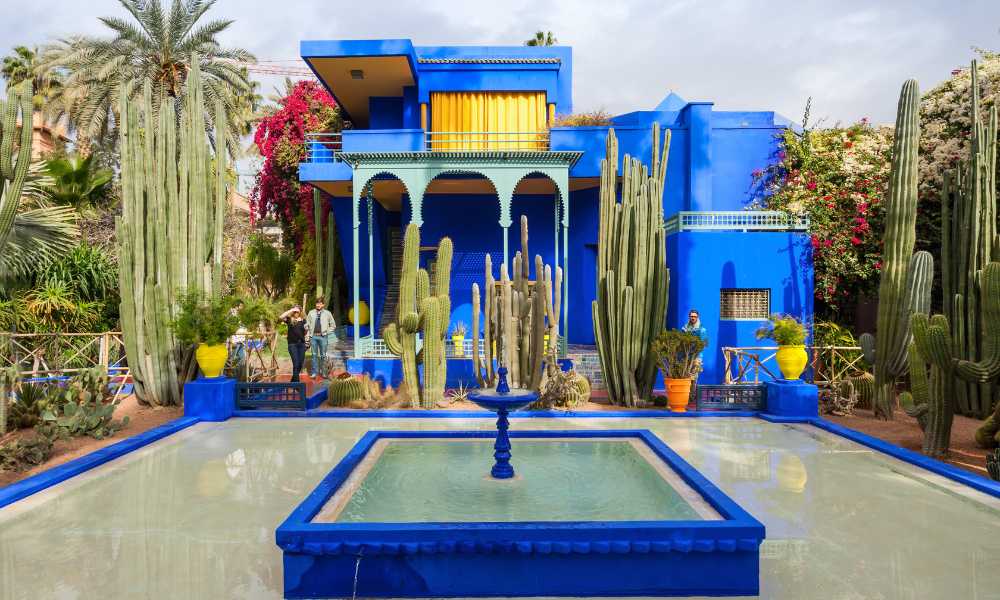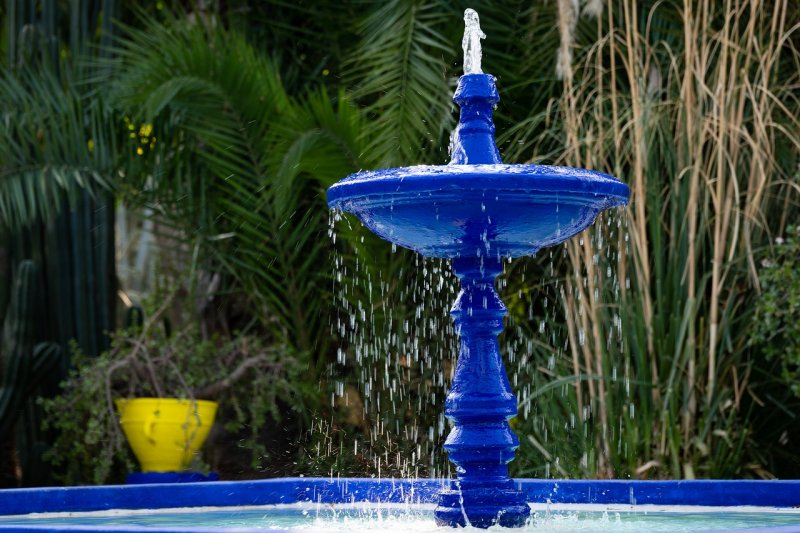Tucked away in the heart of bustling Marrakech, the Majorelle Gardens stand as a tranquil oasis, offering a unique blend of nature, art, and history.
This enchanting botanical garden spans approximately one hectare and boasts a rich tapestry of over 3,000 plant species.
Here, the vibrant greenery embraces a captivating art deco villa known as the House of Illustres, and it’s also home to the captivating Musée Berbère, a museum dedicated to the history of the Berbers.
A Glimpse into History
The history of the Majorelle Gardens is as fascinating as the garden itself.
These gardens were the brainchild of Jacques Majorelle, a French artist who designed and cultivated this unique botanical space in the 1930s.
However, after his passing, the gardens faced abandonment. It wasn’t until the 1980s that the gardens found their savior in the form of the legendary fashion designer Yves Saint-Laurent.
Recognizing the intrinsic value of this verdant haven, Yves Saint-Laurent restored the gardens, transforming them into a lush green space, teeming with life.
A Botanical Paradise

Created by the French artist Jacques Majorelle in 1924, these gardens have blossomed into one of Morocco’s most visited places. It’s easy to see why this place has such an enduring allure.
The Majorelle Gardens provide a serene and lush environment, offering a soothing respite from the hustle and bustle of Marrakech.
As you explore the gardens, you’ll discover a diverse collection of plants from all corners of the globe.
These gardens host an impressive array of flora, including an assortment of cacti, elegant palm trees, and aquatic plants. It’s a botanical paradise that beckons to nature enthusiasts and casual visitors alike.
Garden Layout

The Majorelle Gardens are a labyrinth of winding paths, serene fountains, and reflective ponds. You’ll find pockets of tranquility in every corner, perfect for quiet contemplation or simply enjoying the scenery.
The layout is designed to provide visitors with a sense of serenity and escape from the hustle and bustle of Marrakech.
One of the most enchanting parts of the gardens is the “Jardin d’Eau,” or Water Garden.
Here, lily-covered ponds and fountains create a serene atmosphere, inviting visitors to pause and reflect. It’s a place where time stands still, and you can immerse yourself in the peaceful ambiance..

Musée Berbère: A Cultural Gem
Nestled within the vivid blue art deco studio of the Majorelle Gardens, you’ll discover the Musée Berbère, a cultural gem dedicated to Morocco’s indigenous Berber population.
This museum is a window into the rich heritage of these people, displaying a collection of approximately 600 artifacts that tell the story of their traditions.
Inside, you can admire wood and metalwork, textiles woven with intricate patterns, and regional traditional costumes that reveal the diversity and artistry of the Berber culture.
The museum also features a mirrored chamber filled with a mesmerizing collection of chiseled, filigreed, and enameled jewels, offering a glimpse into the Berbers’ craftsmanship and artistic excellence.
Tips for Visiting Majorelle Gardens
When planning your visit to the Majorelle Gardens, keep a few practical considerations in mind.
The gardens are open every day of the week, from 8 a.m. to 6:30 p.m., with the last entry at 6 p.m.
This schedule allows visitors to choose the most convenient time to explore the garden’s beauty.
Tickets can be purchased at the entrance, but for added convenience, consider buying them online through the official Majorelle Gardens website.
While photography is allowed in most areas, there may be restrictions in certain sections. Be respectful of these guidelines to preserve the tranquility and privacy of the gardens.
Conclusion
The Majorelle Gardens in Marrakech are a must-visit for anyone seeking a serene oasis in the heart of this bustling city.
They are a testament to the profound connection between art, nature, and culture.
The gardens, with their historical significance and tranquil ambiance, are a vivid representation of the enduring charm of Marrakech.